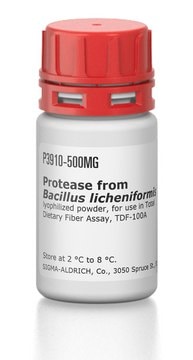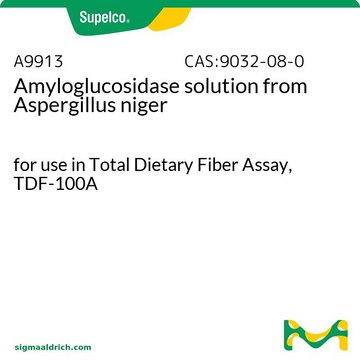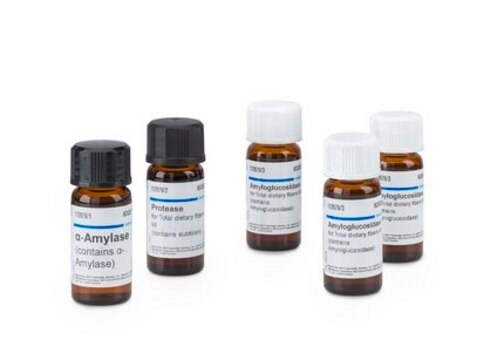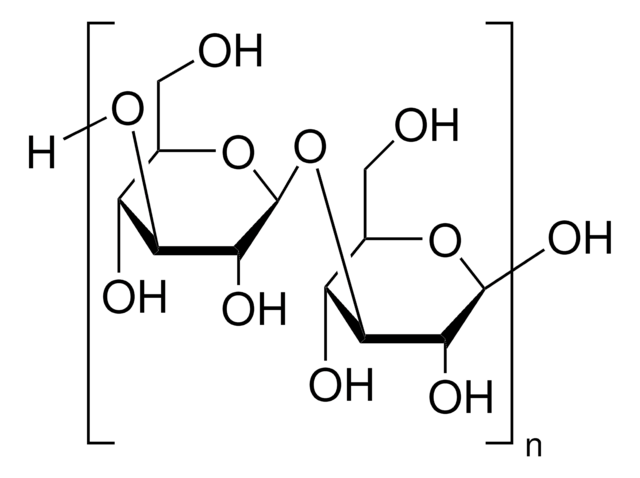TDF100A
Total Dietary Fiber Assay Kit
sufficient for ~100 assays
About This Item
Recommended Products
usage
sufficient for ~100 assays
Quality Level
technique(s)
photometry: suitable
application(s)
food and beverages
general analytical
storage temp.
2-8°C
Application
Other Notes
Principle
Kit Components Only
- α-Amylase, Heat-stable 10 mL
- Amyloglucosidase 10 mL
- Celite 50 g
- Protease 500 mg
related product
Signal Word
Danger
Hazard Statements
Precautionary Statements
Hazard Classifications
Acute Tox. 4 Oral - Aquatic Acute 1 - Aquatic Chronic 2 - Eye Dam. 1 - Resp. Sens. 1 - Skin Irrit. 2 - STOT RE 1 Inhalation - STOT SE 3
Target Organs
Lungs, Respiratory system
Storage Class Code
6.1C - Combustible acute toxic Cat.3 / toxic compounds or compounds which causing chronic effects
Flash Point(F)
Not applicable
Flash Point(C)
Not applicable
Certificates of Analysis (COA)
Search for Certificates of Analysis (COA) by entering the products Lot/Batch Number. Lot and Batch Numbers can be found on a product’s label following the words ‘Lot’ or ‘Batch’.
Already Own This Product?
Find documentation for the products that you have recently purchased in the Document Library.
Customers Also Viewed
Protocols
Enzymatic methods for food analysis are highly specific and offer considerable time and cost savings over other methods, especially from the sample preparation standpoint. We offer a wide variety of convenient kits and reagents for rapid and reliable enzymatic food analysis.
Our team of scientists has experience in all areas of research including Life Science, Material Science, Chemical Synthesis, Chromatography, Analytical and many others.
Contact Technical Service


















